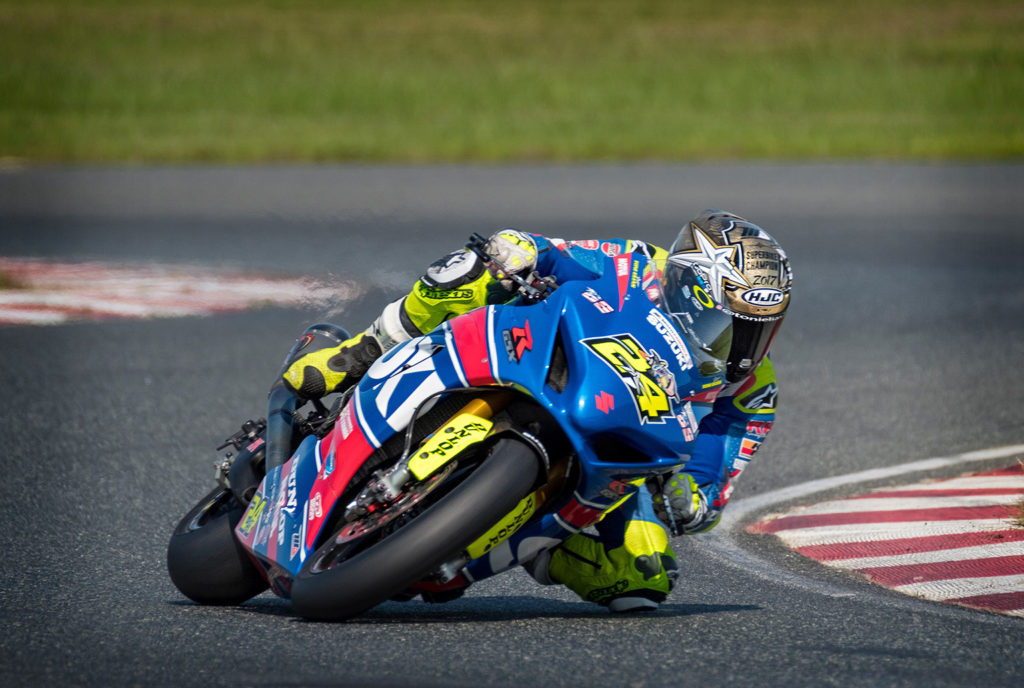USING AUTOFOCUS PROPERLY IN SPORTS PHOTOGRAPHY
In the previous post we were discussing motorsports photography autofocus settings. I illustrated the use of Nikon’s incredible Dynamic-area AF built into their Z-Series line of cameras. In this episode we’ll delve into the use of other autofocus settings that are available to the photographer.
In case you missed the first post in this series you can click here to view it. The topic of creating great motion blur images, like the one below, was explored in that feature. Check it out for great tips and techniques for creating that dynamic style of images. The image below was captured on my Nikon Z7 camera fitted with the inexpensive 28-300mm f/3.5-5.6 zoom. This is the lens I affectionately dubbed “The Streetsweeper”. It basically covers every focal length ever needed. It was attached to the Z7 with the Nikon FTZ II mount adapter. Focal length was set at 105mm. Exposure was 1/180 sec. • f/11 • ISO 100
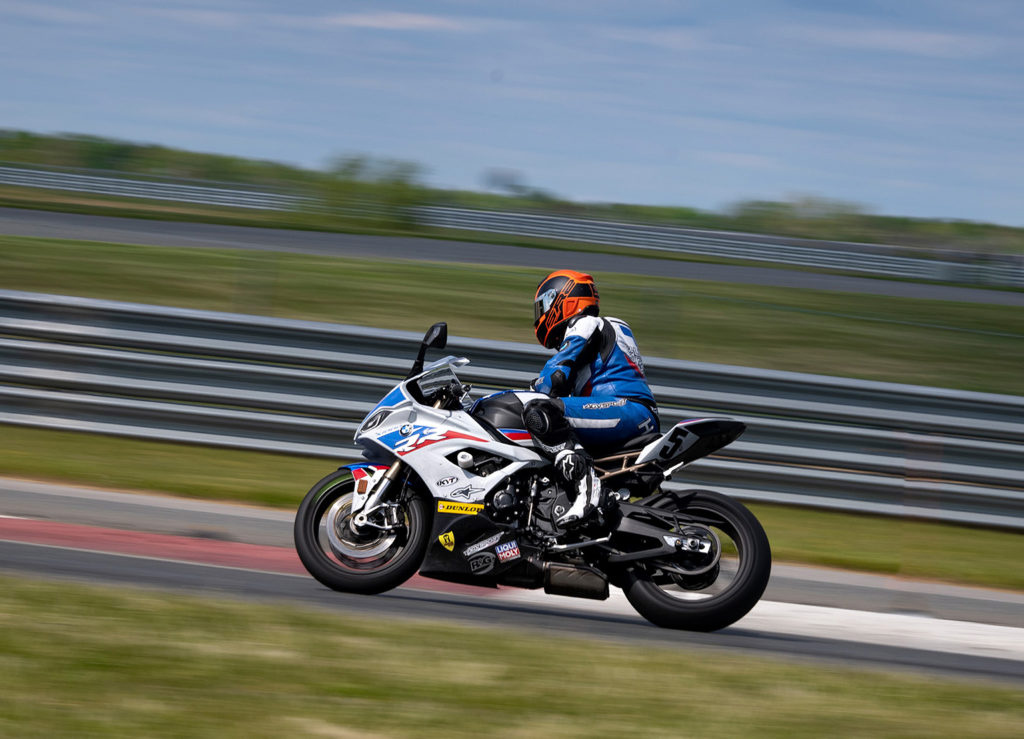
Choose The Proper Motorsports Photography Autofocus Settings
The images below were taken within minutes of each other. These are MotoAmerica racers on a straightaway at New Jersey Motorsports Park. Both images were shot on the Nikon Z6II camera with the Nikkor AF-S Nikkor 300mm f/4E PF ED VR telephoto lens and FTZ II mount adapter.
The exposure for both images was identical. 1/2000 sec • f/7.1 • ISO 800. Both images were shot using Dynamic-Area AF as my chosen autofocus mode. In the first image both motorcycles are in sharp focus. Now look closely at the second image. You’ll note the motorcycle on the right is slightly out of focus. Why?
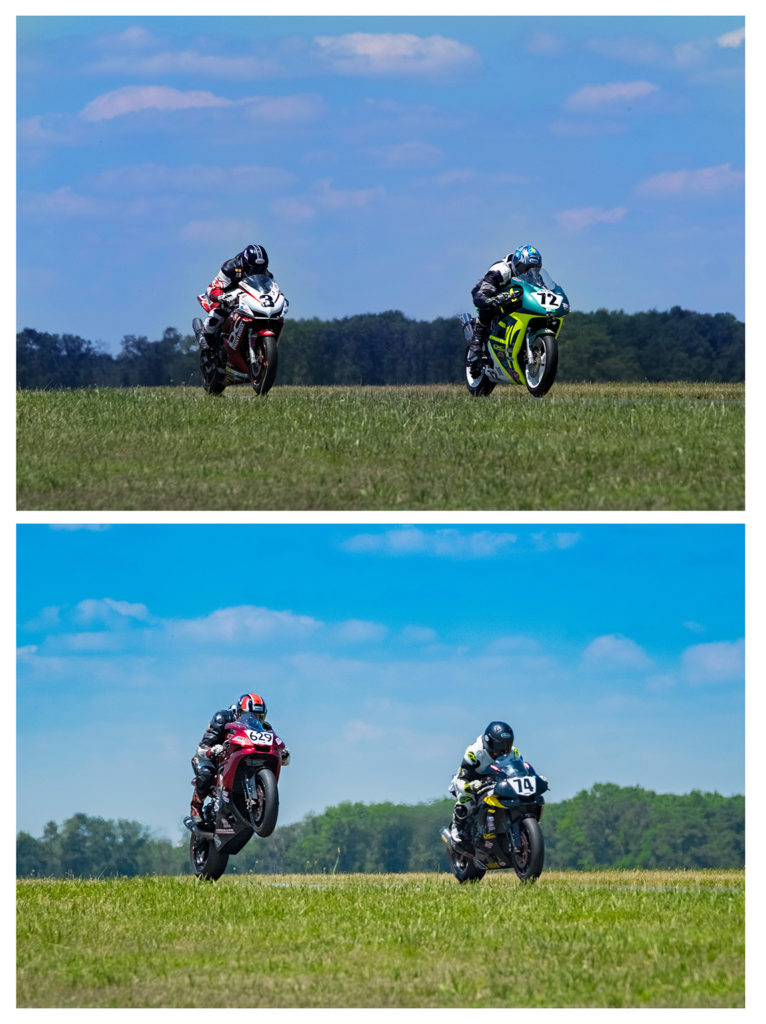
Who Is At Fault?
Well; that depends upon who you ask. Many “influencers” on social media will tell you that it is the camera maker’s ‘fault’. They will carry on about how this camera is inferior to other brands and/or models on the market. They might authoritatively declare that the camera is in need of a firmware update to bring its performance up to professional standards.
I’ll Take The Blame
The fact of the matter is that this photographer was at fault. The wrong motorsports photography autofocus settings were chosen for the action that unfolded in the second shot. In the first shot both motorcycles were moving down track in a similar fashion. The camera recognized this action and chose the appropriate point of focus to keep both subjects sharp.
What this photographer didn’t know was that the rider on the left was going to show off for the camera and “pop a wheelie” as he rode down the track. When he did, the camera did exactly what it is programmed to do. Perfectly. It recognized the dynamic action of the motorcycle lifting its front end, determined that was the main center of interest in the image, and focused precisely on that motorcycle, leaving the other motorcycle slightly out of focus.
Computers…A Love Hate Relationship
I’ve been using personal computers since the late 1980’s and, to this day, remember one of the first things I learned about them. “Computers don’t do what you want them to do. They do what you tell them to do.”

Computers and cameras. I have a love-hate relationship with both
Today’s digital cameras are sheer technological wonders. They are basically little computers attached to a lens. The public keeps screaming for more and more features and the camera manufacturers keep delivering. The potential to flawlessly record whatever scene is in front of you is already here. You simply need to tell the camera what you want it to do.
Had I properly chosen Wide-area AF instead of Dynamic-area AF the camera would have ignored the aggressive action of the “wheelie” motorcycle and maintained continuous sharp focus on both subjects. The camera didn’t do anything wrong. I chose the wrong autofocus mode for the action that unfolded. The camera did exactly what it is designed to do. Perfectly.
Erratic And Unpredictable Action
Nearly all sports have moments of erratic and unpredictable action. Think of hockey players changing direction in an instant. A running back in football pivoting and rushing off in a completely different direction than the one he started out on. A basketball star charging towards the net; then suddenly stopping, pivoting and jumping up in the air to fire off a three-pointer. The list here could be endless.
When choosing the proper motorsports photography autofocus settings, photographers have it pretty easy. Most speed contests follow a set route and pace, on a closed course race track. There are a few notable exceptions. Let’s take a look at one I have some experience with.
Monster Jam

The Monster Energy Monster Truck Series is a truly unique motorsports event. Each truck stands over ten feet tall and weighs approximately six tons! The trucks can be more than twelve feet wide and 17 feet long! To get them racing they have 1,500 horsepower supercharged engines.
The trucks race against the clock, one at a time, on a dirt course crowded with mounds of soil and the carcasses of old wrecked automobiles. The events take place year round in indoor sports arenas; as well as in some choice outdoor stadiums. Many of the Monster Truck races are freestyle events where the competitors are free to choose what tricks they wish to perform. The more difficult and complex the maneuvers, the higher the scores the drivers will earn.
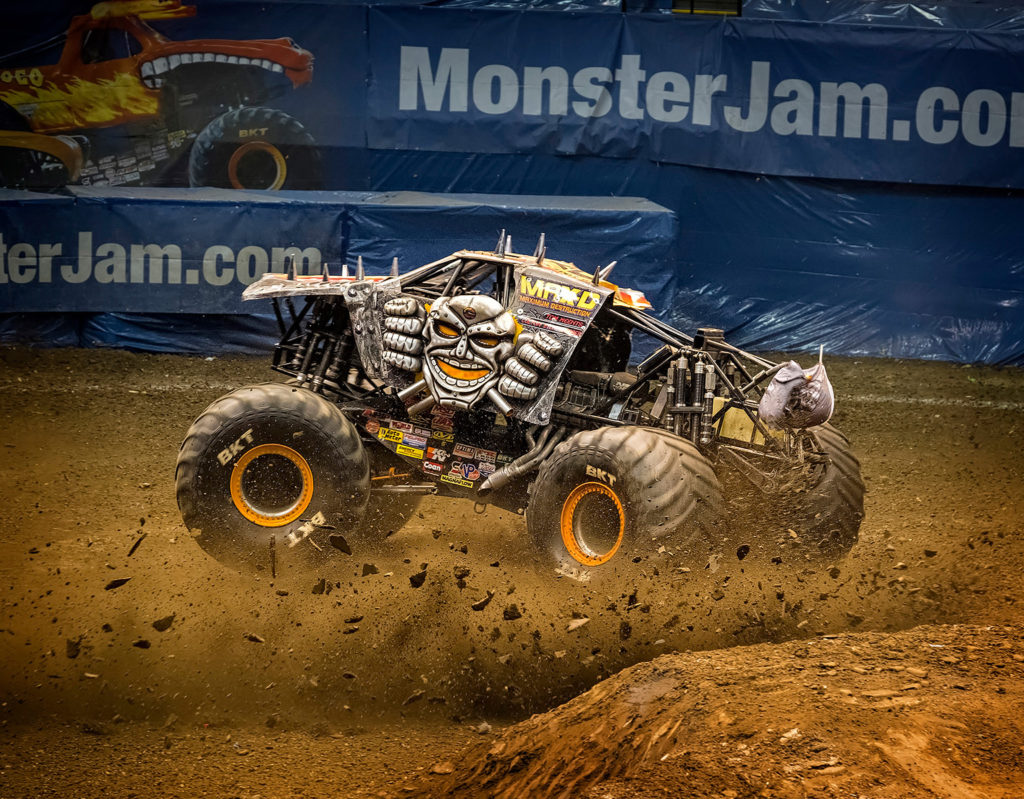
In the image above the Monster Truck Max-D obliterates the racing surface as it executes a U-Turn on the indoor course. The shards of dirt being scattered about gives this image the dynamic movement it needs, even though the vehicle is at a virtual standstill at the moment of capture. Exposure was 1/250 sec • f4.5 • ISO 3200. 70-200mm zoom lens set at 160mm.
Be Ready For Anything
Because of the unpredictable nature of these contests, the photographer must be ready for anything. Flexibility is key so I mount an AF-S Nikkor 70-200mm f/2.8G ED VR II zoom lens with the Nikon FTZ II mount adapter on my Z6II camera body. You never know where the greatest shots are going to materialize. They could be right in front of the photographer, or they could occur at the opposite end of the arena.
Naturally, you’ll need to be proficient with your zoom lens. Knowing which way to rotate the zoom ring on your lens to change focal length needs to be instinctive. If you have to think about it or start “hunting” you’re already too late. You’ve missed the shot. I follow the action continuously, zooming in and out as the truck moves around the course. I leave just a little bit of room around the subject truck. There’s nothing to see outside of that area, which is often cluttered with advertising banners and other distractions.
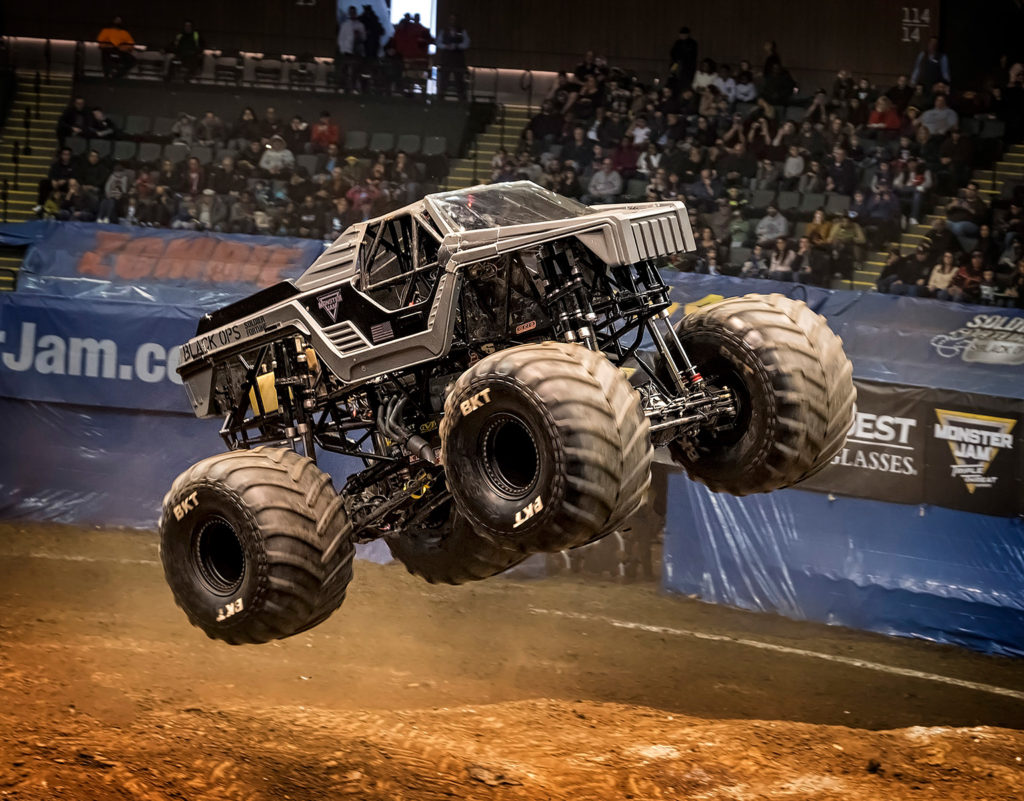
The Monster Truck “Black Ops” getting some air. Nikon Z6II camera. 70-200mm zoom set at 105mm. 1/200 sec • f/4.5 • ISO 3200
When deciding upon the proper motorsports photography autofocus settings for Monster Truck competitions, I generally choose Wide-area AF and set my focus mode to AF-C Continuous AF. When there is a pause in the truck’s routine (there are many, as they line themselves up and prepare for their next stunt) I will halfway press the shutter release again to “update” my starting point of focus.
The Defining Moment
A Monster Truck event is filled with crowd-pleasing stunts. Most occur at relatively slow speeds. Some materialize at a virtual standstill. The best example of this is when the trucks launch into the air. As they reach the apex of the jump they are literally suspended in air. This, coincidentally, is the prime moment to capture the action. Be sure to include some of the ground below, and the stadium seats beyond, in the image. That’s what lends perspective to these behemoth machines flying through the air.
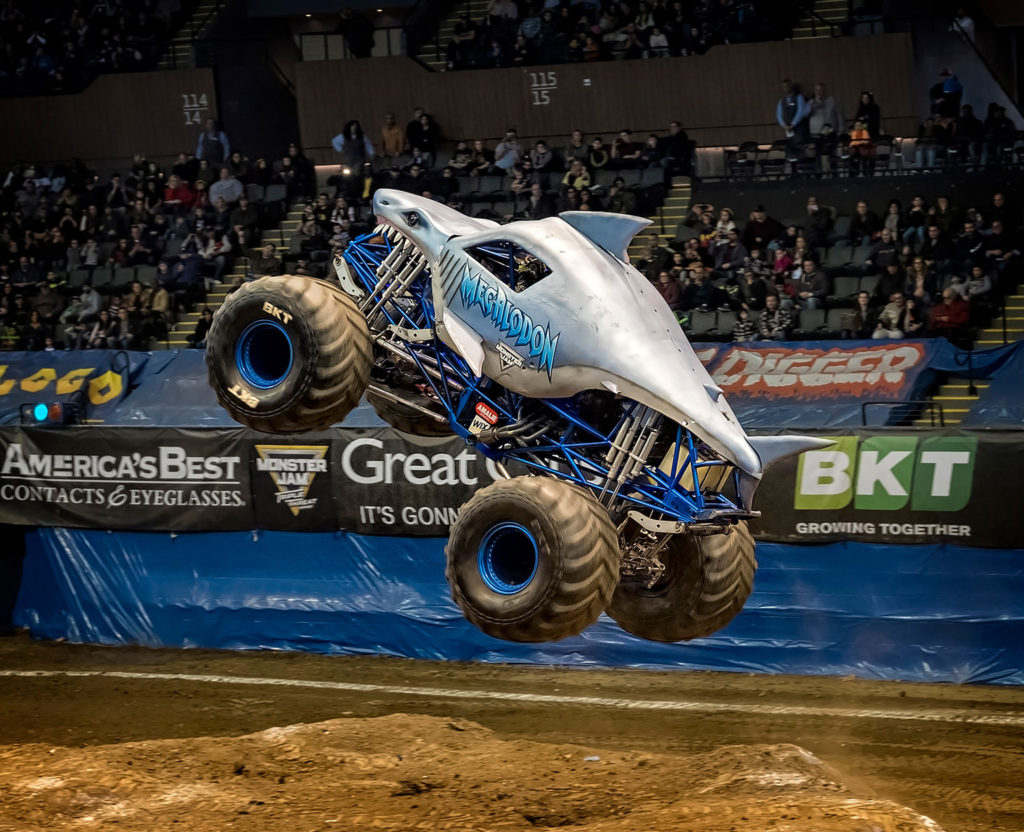
The defining moment captured above was recorded on my Nikon Z6II camera and 70-200mm zoom set at 80mm focal length. Exposure was 1/200 sec • f/4.5 • ISO 3200. The high ISO performance of the Nikon Z6II camera is stellar. Arguably the best performing low light camera made by any manufacturer.
Two Wheels In The Dirt
I have no personal experience photographing motocross or arena cross events. I can only imagine they are very similar to photographing Monster Trucks. The best images I’ve seen involve the vehicles high in the air while negotiating jumps on the course. Like the Monster Truck image displayed above earlier, they also look great digging into the corners and spewing the dirt racing surface about.
Being much smaller than Monster Trucks those motocross bikes are going to be a little harder to get dialed in on when framing your shot. They do move substantially slower than their road-racing counterparts however, so your properly-chosen motorsports photography autofocus settings will capture all their action masterfully.
Conclusion
That about wraps it up for today’s motorsports photography installment. There is a lot more to follow so be sure to subscribe to Roadcraft USA for notifications. As always we welcome your comments below.
Please help support the Roadcraft USA online resource by making product purchases through the links in this post. As Amazon Associates we earn commissions from qualifying purchases made through these links. There is no additional cost to you whatsoever. Thank you for your support!
Click Here to view an interactive visual index page where you can quickly browse through all of the great features that are published on the Roadcraft USA blog.

